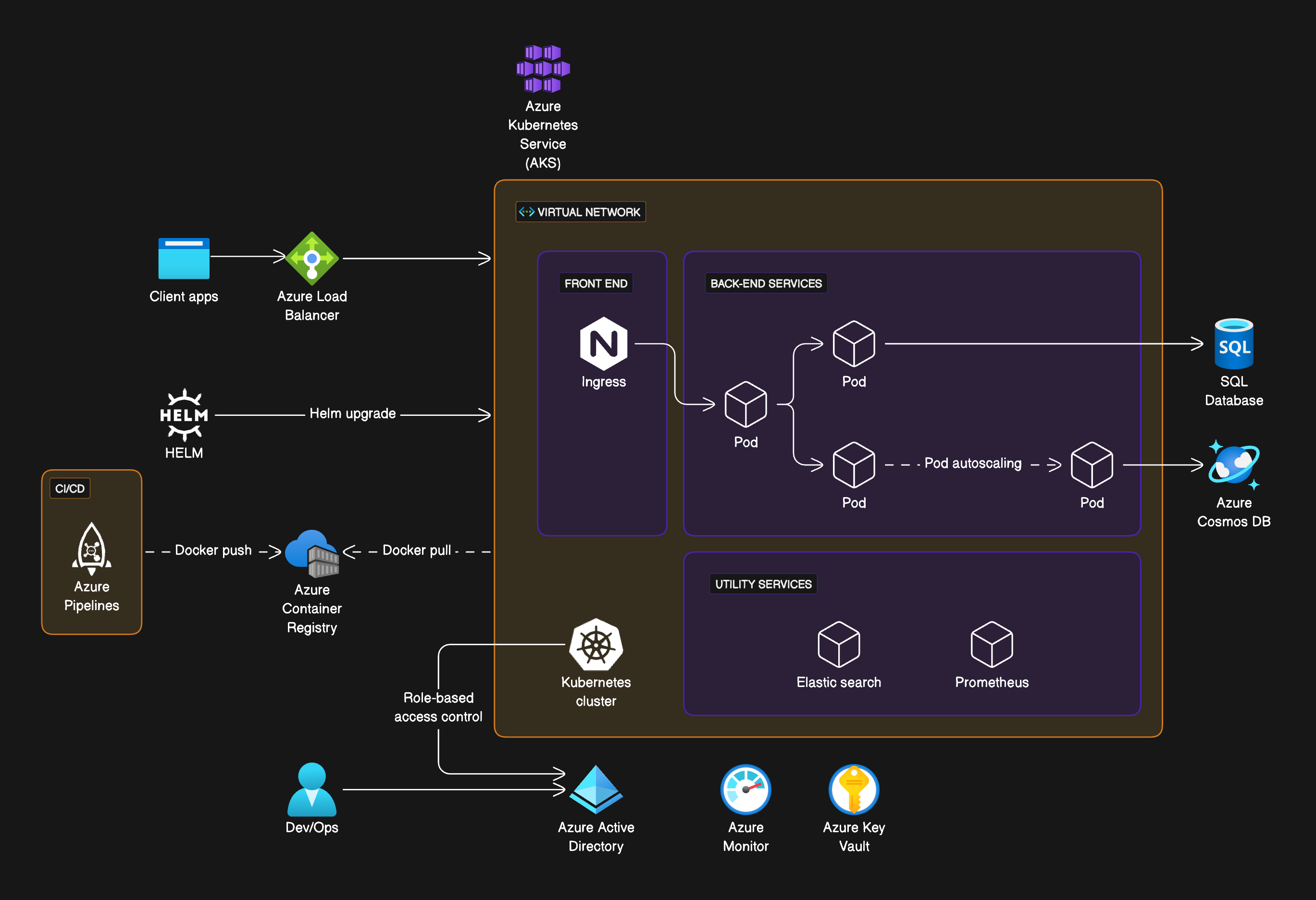Deploying a Scalable Web Application on Azure Using Azure Kubernetes Service (AKS)
 Bran Livinston
Bran Livinston
Overview
In this tutorial, you will learn how to deploy a scalable web application on Azure using Azure Kubernetes Service (AKS). You will follow a narrative that guides you through setting up your environment, deploying a sample application, scaling it to handle increased traffic, and implementing monitoring and logging to ensure high availability and performance.
Objectives
By the end of this tutorial, you will be able to:
Set up an Azure Kubernetes Service (AKS) cluster.
Deploy a sample web application to the AKS cluster.
Scale the application to handle increased traffic.
Implement monitoring and logging using Azure Monitor and Log Analytics.
Prerequisites
Basic understanding of Kubernetes concepts.
An active Azure subscription.
Basic knowledge of the Azure portal.
Scenario
Protagonist: Alex, a DevOps engineer at a growing tech startup.
Challenge: Alex needs to deploy a scalable web application that can handle increased user traffic while ensuring high availability and performance. The application must be monitored and logged to detect and resolve issues quickly.
Steps
Setting Up the Environment
Objective: Create an Azure Kubernetes Service (AKS) cluster.
Steps:
Log in to the Azure portal.
Create a resource group.
Create an AKS cluster within the resource group.
Configure kubectl to connect to the AKS cluster.
bashCopy codeaz group create --name myResourceGroup --location eastus
az aks create --resource-group myResourceGroup --name myAKSCluster --node-count 1 --enable-addons monitoring --generate-ssh-keys
az aks get-credentials --resource-group myResourceGroup --name myAKSCluster
Deploying the Sample Application
Objective: Deploy a sample web application to the AKS cluster.
Steps:
Create a deployment manifest for the sample application.
Apply the deployment manifest to the AKS cluster.
Expose the application using a LoadBalancer service.
yamlCopy codeapiVersion: apps/v1
kind: Deployment
metadata:
name: webapp
spec:
replicas: 1
selector:
matchLabels:
app: webapp
template:
metadata:
labels:
app: webapp
spec:
containers:
- name: webapp
image: mcr.microsoft.com/azuredocs/aks-helloworld:v1
ports:
- containerPort: 80
---
apiVersion: v1
kind: Service
metadata:
name: webapp
spec:
type: LoadBalancer
ports:
- port: 80
selector:
app: webapp
bashCopy codekubectl apply -f deployment.yaml
kubectl get service webapp
Scaling the Application
Objective: Scale the application to handle increased traffic.
Steps:
Scale the deployment to multiple replicas.
Verify the scaled deployment.
bashCopy codekubectl scale --replicas=3 deployment/webapp
kubectl get pods
Implementing Monitoring and Logging
Objective: Implement monitoring and logging using Azure Monitor and Log Analytics.
Steps:
Enable monitoring for the AKS cluster.
View metrics and logs in the Azure portal.
Set up alerts for specific conditions.
bashCopy codeaz aks enable-addons --resource-group myResourceGroup --name myAKSCluster --addons monitoring
az monitor metrics list --resource /subscriptions/{subscription-id}/resourceGroups/myResourceGroup/providers/Microsoft.ContainerService/managedClusters/myAKSCluster --metric-names CPUUtilization
Conclusion
Congratulations! You have successfully deployed a scalable web application on Azure using Azure Kubernetes Service (AKS). You have also implemented monitoring and logging to ensure high availability and performance. You are now equipped to handle increased traffic and detect and resolve issues quickly.
Subscribe to my newsletter
Read articles from Bran Livinston directly inside your inbox. Subscribe to the newsletter, and don't miss out.
Written by

Bran Livinston
Bran Livinston
Delving into Frameworks, Cloud, and Automation Testing, I'm focused on mastering technology by building robust frameworks. Embracing the boundless potential of the Cloud, I'm ensuring efficiency and reliability in Automation Testing. Dedicated to strengthening my tech foundation and keen on fundamentals, I approach each learning opportunity with enthusiasm. Always curious and evolving.